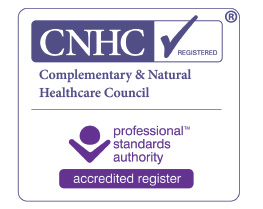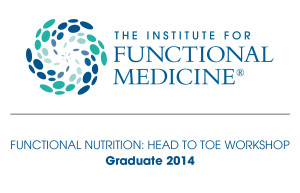10 Steps to Reduce Inflammation – the series
In this series you will learn the most important ways to to reduce inflammation and improve your health and wellbeing, based on my 10 years of research and clinical practice.
Each of the 10 steps will be covered in some detail so that you will have both theoretical understanding and many practical tips to reduce your burden of inflammation.
This post explains what inflammation is, what functions if carries out, when and why it is beneficial and why in general it is important to reduce inflammation to benefit your health. I include a table of contents so that you can easily navigate around the whole series.
What is inflammation and why should you reduce inflammation?
It seems abstract but inflammation underlies just about every known disease.
Do you wonder why you feel more tired than you perhaps should do and what might be causing your fatigue? Could you avoid or reduce those headaches, frequent colds or other infections? Do you have gut issues like dysbiosis or IBS? Are you struggling with insomnia, be it falling asleep or staying asleep? Perhaps you simply do not feel refreshed from sleep? Is brain fog limiting your capacity to think and be productive and enjoy life? Do you have difficulty losing weight? Do you have pain or any other kind of chronic health condition? Are you concerned about heart disease or Alzheimer’s disease or any other form of dementia such as vascular dementia?
If you answered yes to any of these questions inflammation is almost certainly a key driver of your symptoms or concerns.
Inflammation is now even linked with depression, anxiety and post-traumatic stress disorder (1), though this is not to negate the impact of childhood trauma and other life stressors. Inflammation, when chronic, can even cause a reduction in the ability to recognise the mental state of another person, and so keeping inflammation down is vital for empathy and social interaction (2).
10 steps to reduce inflammation: what is inflammation?
You can think of inflammation as a fire to kill germs and clear debris from an injury or an infection. Indeed the word originates from the Latin inflammare, which means ‘to set on fire’. It is typically characterised by heat, redness, swelling if visible on the surface of the body and often pain, but also loss of tissue function.
Inflammation is the way the immune system keeps you safe from infection and debris from dead cells and allows tissues to be repaired (3). However inflammation can be triggered not just by infection and injury, but by many dietary, lifestyle and environmental factors.
Inflammation causes tissue damage which in turn causes more inflammation. There is an off-switch, but the problem is that if dietary, lifestyle and environmental factors keep triggering inflammation it can then keep itself going rather than turning itself off once it has done its job of healing a wound or an infection. This self-sustaining chronic inflammation can have a domino effect on your health and in many conditions it seems that chronic inflammation can repeatedly trigger bouts of acute inflammation over a long period of time (4).
Almost every chronic illness is associated with chronic inflammation. Even conditions like osteoarthritis (5) and osteoporosis (6) which were once believed to not be inflammatory may turn out to have an inflammatory component.
So it is important to learn what dietary, lifestyle and environmental factors can trigger inflammation on an ongoing basis and to how to avoid or minimise these triggers, and this is precisely what will be revealed in these 10 steps to reduce inflammation.

Inflammation, depression and anxiety
Inflammation has another useful function – to cause depressed mood (7). How does this happen and why is this useful?
When you have an infection inflammation will reduce the levels of your neurotransmitters dopamine (8) and serotonin (7). In the case of serotonin, for example, the amino acid tryptophan is shunted away from serotonin production to make inflammatory molecules instead and this can be triggered by inflammation, infection or stress (9). The result of reduced dopamine signalling is that you have less motivation to do things when your immune system needs your energy to fight off the infection or to deal with the inflammation and the result of reduced serotonin signalling is that you are less likely to socialise and spread the infection, thus protecting the collective, the ‘tribe’ (10).
Inflammation will also contribute to depression by causing an increase in your stress hormone cortisol (7) and inflammation is associated with anxiety, post-traumatic stress disorder (PTSD) and bipolar disorder (1).
In fact it is now understood that drugs previously thought to reduce depression and anxiety by inhibiting reuptake of serotonin and noradrenaline (selective serotonin and serotonin noradrenaline reuptake inhibitors – SSRIs and SSNIs) may actually owe at least some of their effectiveness to their anti-inflammatory effects on the brain (11, 12).

Inflammation and exercise intolerance in long covid and chronic fatigue syndrome/myalgic encephalitis CFS/ME
Reduced exercise capacity in long covid is associated with elevated levels of inflammatory markers. This is especially marked in a reduced ability to increase heart rate during exercise, a phenomenon known as ‘chronotropic incompetence’ (13).
Chronotropic incompetence is a hallmark not only of long covid but also of CFS/ME (14) and some sufferers of CFS/ME also have a condition known as Postural Orthostatic Tachycardia Syndrome (POTs) in which even standing up will not adequately elevate their heart rate as much as it should (15).
The severity of CFS/ME symptoms such as exercise intolerance, impaired cognitive function, musculoskeletal aches and pains and flu-like symptoms are linked with increased inflammation (16, 17).
This doesn’t prove that inflammation necessarily causes the long covid or CFS/ME symptoms such as chronotropic incompetence, fatigue and exercise intolerance, but I would say that is a strong possibility and inflammation is certainly part of the picture and in my mind this gives you another reason to reduce inflammation to reduce the risk of a long-term severe impact on your quality of life.

The 10 steps to reduce inflammation
So you should now have some understanding of what inflammation is, how acute inflammation can be beneficial, why and how chronic inflammation can be harmful and some of the many medical conditions chronic inflammation has been linked with, arming you with a basic understanding of inflammation as we explore 10 steps to reduce inflammation. Even if you are not concerned about developing a medical condition I have outlined many ways in which inflammation may be impacting the quality of your life, from sleep disturbance and low energy levels to headaches and other aches and pains, difficulty losing weight, depression and brain fog.
Now that you understand the role of inflammation in health and disease you may be wondering what steps you may take to reduce inflammation. This will be covered in depth in the remaining posts in this series, which together could be seen as a short course covering the most important things you need to know to improve your health and wellbeing.
I suggest you read through the series of posts and pick out just 1 or 2 low hanging fruit that you would find it easy and even enjoyable to implement. Make a note in your diary to return to this series of written posts or to the videos 30 days later once these change have become routine and pick out the next 1 or 2 lowest hanging fruit to focus on.
You can navigate around the series using the table of contents below.
Do you experience any of the symptoms or conditions you may now be linking with inflammation? Are you interested in finding out more about how to reduce inflammation to improve your health both and improve your quality of life now and for many years to come? Let me know in the comments below.
10 Steps to Reduce Inflammation – Table of contents
- What is Inflammation? Why Reduce Inflammation?
- How to Implement Dietary and Lifestyle Changes to Reduce Inflammation
- STEP 1: Detox – How Toxins Cause Inflammation
- How Toxins Cause Weight Gain and Mimic Oestrogen (Chemicals in Plastic)
- Mycotoxins
- Toxic Foods and Water
- Toxic Pesticides and Herbicides
SIGN UP TO THE NEWSLETTER TO BE NOTIFIED WHEN EACH NEW POST IS RELEASED.
Learn more about my work in London, Devon (Totnes) and online.






Leave a Reply